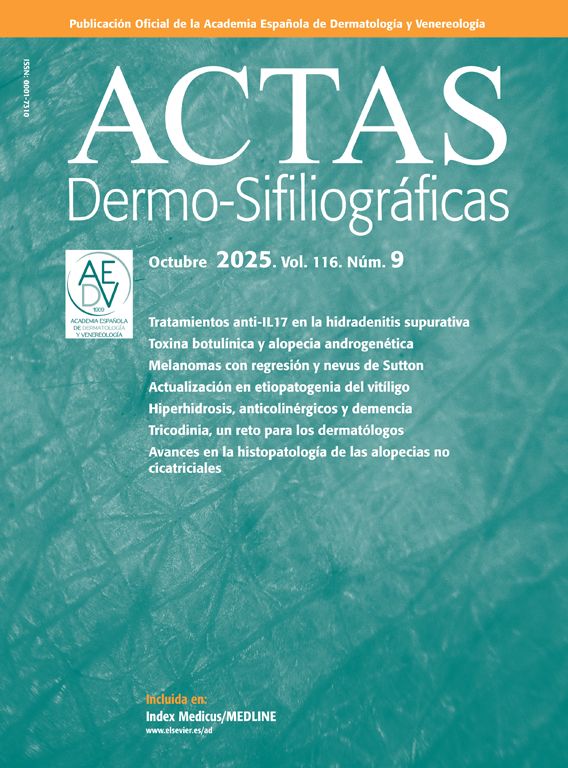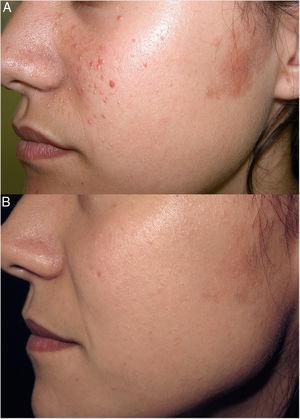An 18-year-old woman presented with a 10-month history of a 1cm nodule on her left hand (Fig. 1A). The lesion was surgically excised considering a clinical diagnosis of pilomatrixoma vs dermatofibroma. At the time of suture removal, the wound showed purulent discharge. Histopathology showed lobulated grains, a mixed inflammatory infiltrate, and the Splendore-Hoeppli phenomenon (Fig. 1B). Whitish, wrinkled colonies grew in Sabouraud culture from the discharge (Fig. 1C). Negative hypoxanthine and positive casein hydrolysis tests confirmed Nocardia brasiliensis infection (Fig. 1D). Treatment involved a 6-month regimen of trimethoprim–sulfamethoxazole (SXT) 800/160mg BID and amoxicillin–clavulanic acid (AMC) 875/125mg BID, resulting in both mycological and clinical cure.
Mini-mycetomas are small, non-invasive, localized forms of actinomycetomas caused by N. brasiliensis, primarily affecting children and adolescents. A robust immune system or infection with less virulent strains likely explain this localized form, as opposed to typical actinomycetomas and eumycetomas. While there are no established treatment guidelines, anecdotal evidence suggests a minimum 6-month regimen with AMC and SXT. Since mini-mycetomas have an unremarkable presentation, clinicians should become aware of this condition in endemic areas or in patients who migrate from affected regions.






